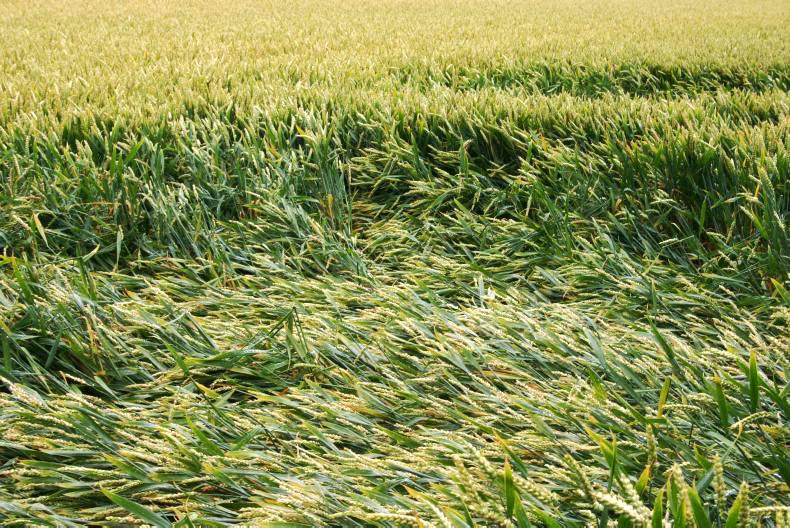In recent weeks, many farmers who sell straw for composting have been made aware that, in future, straw is to be tested for the presence of mepiquat chloride, an active ingredient present in growth regulators like Terpal and Canopy.
The move follows an increasing awareness that the old level set for residues was at the level of detection at that time. Now detection has become increasingly powerful and any level is seen as a breach.
With mushrooms now being tested for everything, the old limit has become a real issue. While the presence of very low levels is not seen as a safety issue, it is a regulatory issue that is currently being re-evaluated.
Straw testing
While straw in wricks from last year’s crop is currently being tested before collection, growers must now be warned that straw treated with a product containing this active must not be used for composting in the seasons ahead.
This is not a new constraint, but it did come as news to me. Having had a few queries on the issue, I asked around to get the background on it. It seems that the action is very much above board and essential for the mushroom industry.
It seems that minute traces of mepiquat can be present in the straw at the end of the season and can survive the composting process. It can then transfer in barely quantifiable levels to mushrooms grown from compost made from straw of treated crops.
The crux of the issue is that as mepiquat is not used in mushroom production, there is a de facto zero tolerance for this active. Therefore, any presence of mepiquat in mushrooms, however small, is a technical breach of the MRL (maximum residue level) legislation.
Moves are now afoot through the European Food Safety Authority to increase the permissible level of mepiquat allowable in mushrooms from the de facto zero tolerance to a figure slightly above this (from 0.05mg/kg to 0.2mg/kg). If this change can be agreed, the current restrictions can be relaxed somewhat in the future.
In the meantime, the safest bet for this important sector is to ensure that any straw intended for sale for composting is not treated with a growth regulator containing mepiquat chloride. Indeed, the usage of either product on wheat is normally quite small in this country.
While issues relating to the 2014 crop have not been brought to my attention, it is reported that mepiquat chloride was found in wheat straw imported into Northern Ireland from England last year and this has served to heighten awareness of the risks. The consequence was to highlight the constraint on the labels of Terpal and Canopy (which always existed) which prevent treated straw from being used as a horticultural growth medium or as a mulch, ie it should not be used to produce compost for the production of mushrooms.
It is worth noting that there are also constraints via label statements on the use of straw treated with other PGRs, which specify “not for use as organic mulch or growth media”.
Late-season PGR
Straw destined for compost manufacture for mushrooms must not be treated with either Canopy or Terpal products.
So for growers with a need for late-season plant growth regulation (PGR), for whatever reason, what options are available for crops perceived to have a high lodging risk?
This could arise from excess nitrogen use, high soil fertility, excessive plant density or some combination of any of these.
There are a number of options available to growers for late-season growth regulation in wheat and barley. If your straw is destined for mushroom compost, then quite simply do not use Terpal or Canopy. Or if for some reason you must use these products, then segregate this straw (preferably by chopping and incorporation) and do not allow it to go for composting.
However, given that contractors are generally used for baling and that straw from different fields is assembled into a single wrick, once treated straw is put into rows for baling it adds to the risk of something going wrong.
In practical terms, the use of CCC is confined to early stem extension in wheat (GS31) and even earlier in barley (GS30). Meteor can be used up to before second node detectable. K2 is similar to cycocel, with GS31 being the latest timing for wheat and barley.
Late-season options
Terpal, Canopy, Cerone and Moddus are the main options for late-season application, with the different ones specified at between GS39 (flag leaf fully unfolded) and GS41 (start of booting).
Of these, it would be more common to apply Canopy or Moddus (in conjunction with CCC) early while Terpal and Cerone are normally confined to late-season application but Canopy and Moddus can also be applied late in the season.
If you had planned to use Terpal or Canopy late, you cannot do this now if you intend to supply straw for composting. Your late-season options are confined to Cerone or Moddus. You can apply Moddus (and also Canopy) more than once to wheat and barley crops providing the maximum application rate is not exceeded (0.4 litres/ha for wheat and 0.6 litres/ha for barley) and that it is applied before the latest application timing. For late timings on wheat and barley, Moddus must be applied on its own.
However, if the straw is not going for composting then a late-season application of Canopy or Terpal can be applied following any of the other early stem extension treatments.






 This is a subscriber-only article
This is a subscriber-only article










SHARING OPTIONS: